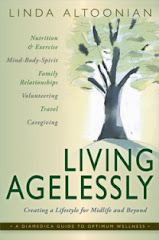I helped a friend move her aged parents into an apartment in an assisted living development. It is so gorgeous and offers so many amenities and services that I was ready to move in.
But in the process of setting up furniture and unpacking boxes, it became clear just how many dangers there were even in this beautiful place for these sweet, frail people. The bathroom is a particularly lethal, so this column is dedicated to identifying some of those problems and suggesting solutions.
Smooth surfaces, glass and mirrors, soap and water, and the small spaces of a bathroom can spell disaster, particularly for the aging. Precautions against falls, burns, poisons, drowning, and electrical injuries must be taken.
The ideal bathroom would be on the first floor with a door that swings out (allowing access to a fallen person blocking the door), has a 32-inch doorway (without a sill) and five-foot turning radius (to accommodate a walker and wheel chair), rounded-edge cabinetry and counter tops with knee space, slip-resistant floor (vinyl, matte-finished, textured-tile, low-pile carpet but no throw-rugs or bathmats), tempered or shatterproof-glazed glass, and roll-in shower.
Install non-skid, adhesive strips in the shower and bathtub and institutional-grade, stainless-steel, grab bars for solid support in the bath and near a toilet that is adjustable or has a seat 18 inches from the floor.
Use a portable, water proof, non-slip shower chair and hand-held, shower head. Hang a soap and shampoo dispenser and a ceiling-mounted, heat lamp to maintain a warm bathroom, especially important for those with rheumatoid arthritis.
Insulate exposed pipes and mount a single-lever, touchless or push-button faucet with temperature and volume control to prevent burns. Set water heater at 120 degrees.
Avoid keeping medications in the bathroom. Their organization and careful dispensing is more difficult, and moisture and heat can be damaging. Toiletries and medicines should be stored separately from household cleansers.
Rocker light switches and levered door and drawer pulls are crucial for those with arthritic hands and weakened muscles. Increase lighting for the vision impaired. Install a night light, and easy-to-reach telephone or emergency call button. Keep a key just outside the door.
Visit www.carepathways.com and www.senioremporium.com for more information on bathroom safety and ordering items, and read Rosemary Bakker’s book, Elderdesign (Penguin).
Saturday, January 7, 2012
Subscribe to:
Post Comments (Atom)


No comments:
Post a Comment